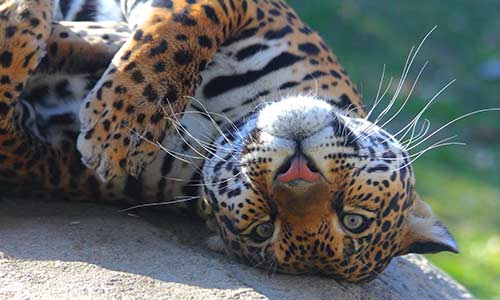Jaguar Etymology

The word “jaguar” is derived from iaguara, a word in one of the Indigenous languages of Brazil for a wild spotted cat that is larger than a wolf.[2]
Onca is derived from the Lusitanian name onça for a spotted cat in Brazil that is larger than a lynx.[3] Indigenous peoples in Guyana call it jaguareté.[4] The word “panther” is derived from classical Latin panthēra, itself from the ancient Greek pánthēr (πάνθηρ).[5]
Classification
Taxonomy
In 1758, Carl Linnaeus described the jaguar in his work Systema Naturae and gave it the scientific name Felis onca.[6] In the 19th and 20th centuries, several jaguar type specimens formed the basis for descriptions of subspecies.[7] In 1939, Reginald Innes Pocock recognized eight subspecies based on geographic origins and skull morphology of these specimens.[8] Pocock did not have access to sufficient zoological specimens to critically evaluate their subspecific status, but expressed doubt about the status of several. Later consideration of his work suggested only three subspecies should be recognized. The description of P. o. palustris was based on a fossil skull.[9]
By 2005, nine subspecies were considered to be valid taxa.[7]
Formerly recognized subspecies
Reginald Innes Pocock placed the jaguar in the genus Panthera and observed that it shares several morphological features with the leopard (P. pardus). He therefore concluded that they are most closely related to each other.[8] Results of morphological and genetic research indicate a clinal north–south variation between populations, but no evidence for subspecific differentiation.[17][18] DNA analysis of 84 jaguar samples from South America revealed that the gene flow between jaguar populations in Colombia was high in the past.[19] Since 2017, the jaguar is considered to be a monotypic taxon.[20]
